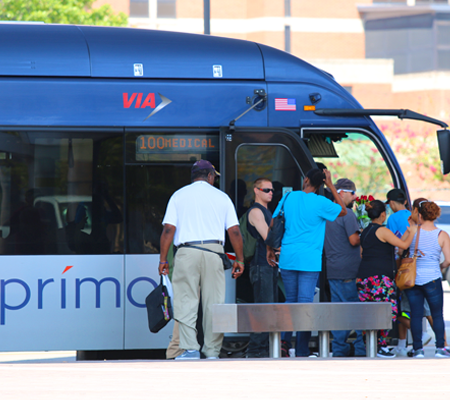Gains tracked indicate positive trend
VIA Metropolitan Transit is tracking steady gains in bus ridership, signaling an upward trend for transit in San Antonio that mirrors growth in transit ridership post-pandemic in cities across the U.S., such as Los Angeles and Chicago.
VIA attributed the increase in ridership primarily to its frequency on key routes. VIA ridership data confirm that there is a correlation between bus frequency and ridership. VIA found that 10 routes make up approximately half of the growth between 2022 and 2023, all of which are frequent routes that have peak service of 20 minutes or better.
The high-frequency VIA Route 552 has seen an increase of 28% year-over-year and accounts for 14% of annual growth in 2023. Additionally, VIA Prímo routes 100, 102 and 103 saw an increase of 13% to 20%, and they account for 18% of growth in 2023.
“Over the past few years, we have endured extraordinary circumstances as a community but have maintained our focus on keeping San Antonio moving forward, safely,” VIA President/CEO Jeffrey C. Arndt said. “Today, more than ever, affordable, reliable public transit is essential, and we are seeing more people use VIA to stay connected to work, school, health care, grocers and each other.”
Underpinning VIA’s ridership increase is its consistently high Net Promoter Score, or NPS. The NPS, which can range from -100 to 100, is a metric that measures customer satisfaction and loyalty, and frequency is measured as the number of buses that stop at a bus stop per hour divided by 60 minutes. The NPS is an indicator of how likely customers are to recommend a product or service to friends and family. For VIA, the NPS applies to VIA fixed-route bus service. It’s designed to capture loyalty and helps in gauging potential growth.
The NPS scores for VIA remain high at 57 compared to the industry average of 29, as of Fall 2023, indicating that VIA customers are likely to recommend VIA as a transportation alternative.
COVID restrictions and health concerns hit every major U.S. transit agency with steep declines beginning in 2020 and some cities experienced up to an 80% drop in ridership. VIA maintained over 50% of its ridership throughout the height of the pandemic, offering safe, reliable transportation options that included increased safety protocols and essential service models.
